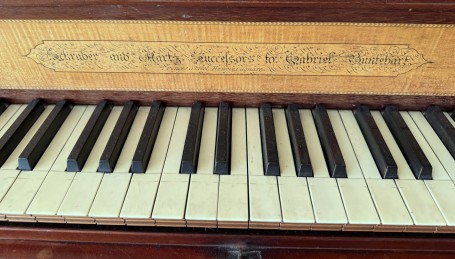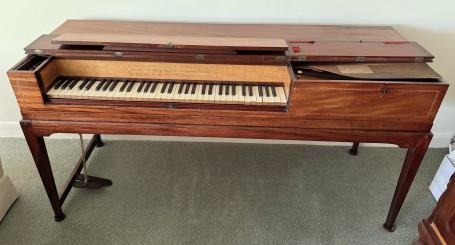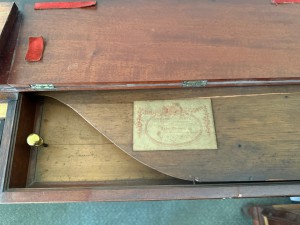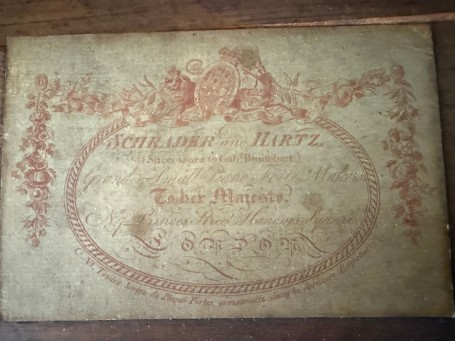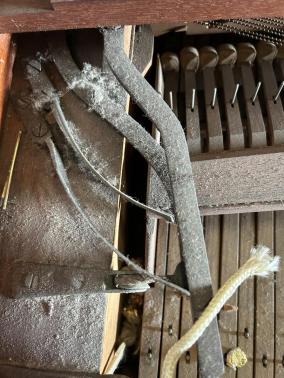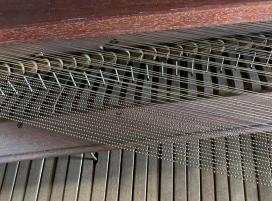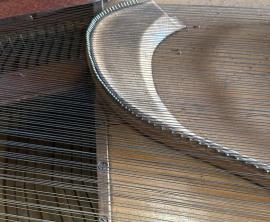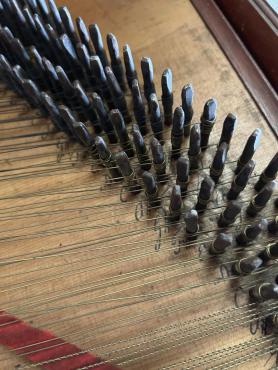
Schrader & Hartz c. 1795
This beautiful calligraphy introduces one of the most interesting pianos to appear at auction for some time. The text tells us that Schrader & Hartz were successors to Gabriel Buntebart, partner to the very first London maker, Johannes Zumpe. The address, 7 Princes Street Grosvenor Square was ocupied by Zumpe from 1761.
We note that this is a very early example of a piano with a 5½-octave compass. The French stand carries two pedals, apparently for a lid-swell and a buff stop.
This fine piano does need a thorough overhaul, but it appears to be complete and in original condition, with no 'interventions'. It was in Hawley's auction on September 6 as Lot 66, with an estimate of just £200 - £300, but it was desperately disappointing to see a complete lack of bids, and an eventual sale for just £50.
It is worth noting that only three pianos by Schrader & Hartz are recorded in 'Clinkscale', and all three of these have compasses of just 4½ octaves.
All images by, and by courtesy of, Hawley's Auctioneers, Beverley, Yorkshire. https://www.hawleys.info/
